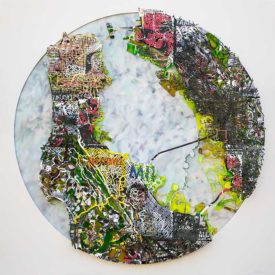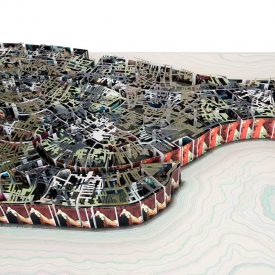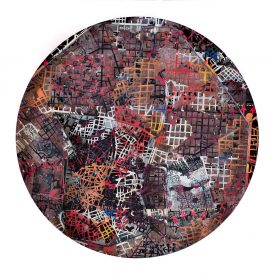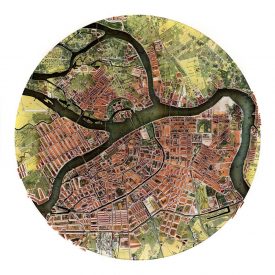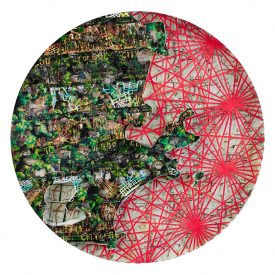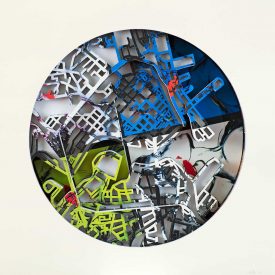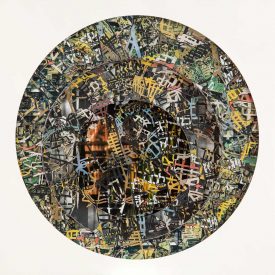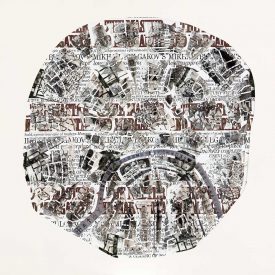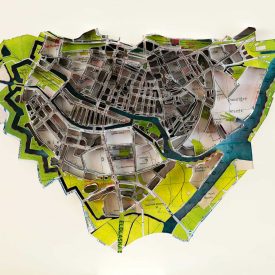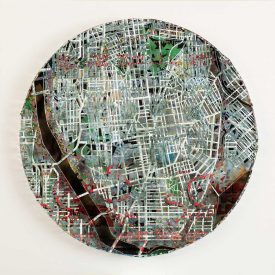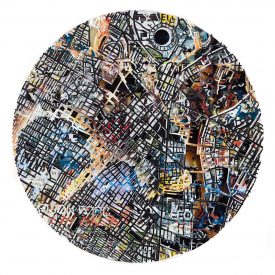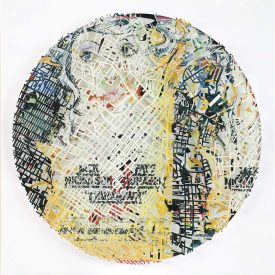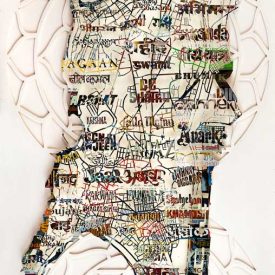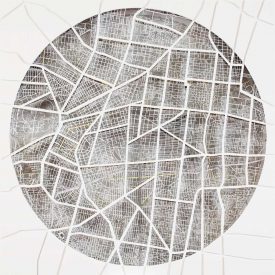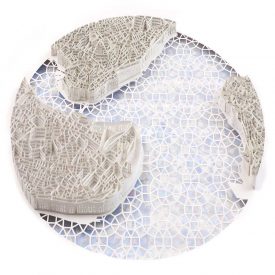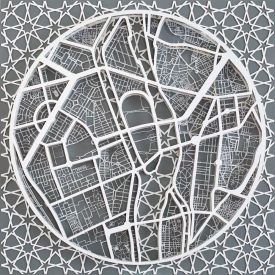During the 1960s the South Bronx experienced a serious economic decline that was to lead to it becoming one of the poorest boroughs in the United States. Some contribute the construction of the Cross Bronx Expressway built from 1963 to 1972 for providing a catalyst for this decline, for It led to a fall in property values and an exodus of the areas middle class. This ushered in a period of destruction in which a wave of arson occurred, suspected to be a method of claiming insurance for buildings of declining value. Large parts of the South Bronx were burnt down at this time, leaving areas of vacant land.From the ruins of these former neighborhoods an extraordinary cultural flourishing was to to occur and is indeed a testimony to the remarkable creativity and spirit of the mainly Caribbean descended populace. The South Bronx has an eclectic mix of ethnicity, with layers of immigration from Puerto Rico, Jamaica and The Dominican Republic adding to the earlier Italian and Irish neighborhoods. The late 1970s was to see the emergence of Hip hop which has gone on to be a worldwide phenomenon influencing contemporary music for all the subsequent decades. The South Bronx was the birthplace of this movement and in the early days DJ Kool Herc, Grandmaster Flash and DJ Clark Kent created some of the more iconic records of that time. “Boogie Down Bronx” and “The Message” are songs of the gritty Urban street experience lived in the South Bronx. In particular “The Message’ with it’s narrative of inner city deprivation and violence, some of the lyrics from this song are cut through the outer circumference of the sculpture.
During this same time period another remarkable artistic flowering was taking place, namely that of the graffiti and street art movements. Like the Hip Hop music this creative and anarchistic phenomena was to have a far reaching influence felt around the whole world, with many appropriating the medium for their own cultural and political expression. Again one of the prime places that this emerged from was the Bronx and Washington heights in Upper Manhattan. In the late 1970s and on in to the mid 80s an increasingly sophisticated and complex form of street murals developed on the sides of the New York Subway cars. Eventually whole trains were painted, snaking through the city like intensely colored mobile wall murals. In the sculpture some of these long vanished murals form the outer circumference of the work and line the edges of the Harlem River.
The surface street layer of the Sculpture is cut from a poster of Spike Lee’s film “Summer of Sam” set in the Bronx and New York in 1977, a time of riots and blackouts in New York. The film provides a detailed social and cultural history of New York and the Bronx during the crime wave of 1977 and depicts the Italian American community of the Bronx’s response to the gruesome murders being committed by the Son of Sam in the boroughs. The film illuminates the fears and suspicions of the residents which in turn lead to prejudices violence and social unrest. Underneath the street network and partially visible are images from the poster of the film “I Like it Like that” by African American director Darnell Martin. A film from 1994 that looks at the struggles and deprivations of a young Puerto Rican couple living in the South Bronx and reflects the stark realities facing the younger and recent immigrant populations.
Cities sometimes have brief periods of being in the spotlight for a time of unique cultural expression, something for which they become identified with. It can often be some sort of creative rebellion, a youthful grassroots breakdown of an existing order or social norm, which results in an output of intense and far reaching creativity. The expression that came from the Bronx in the 1970s and 1980s has had perhaps a more lasting influence than most, with many emulators to this day all around the world. The creative reactivity was an outlet for the suffering that the inhabitants endured.

